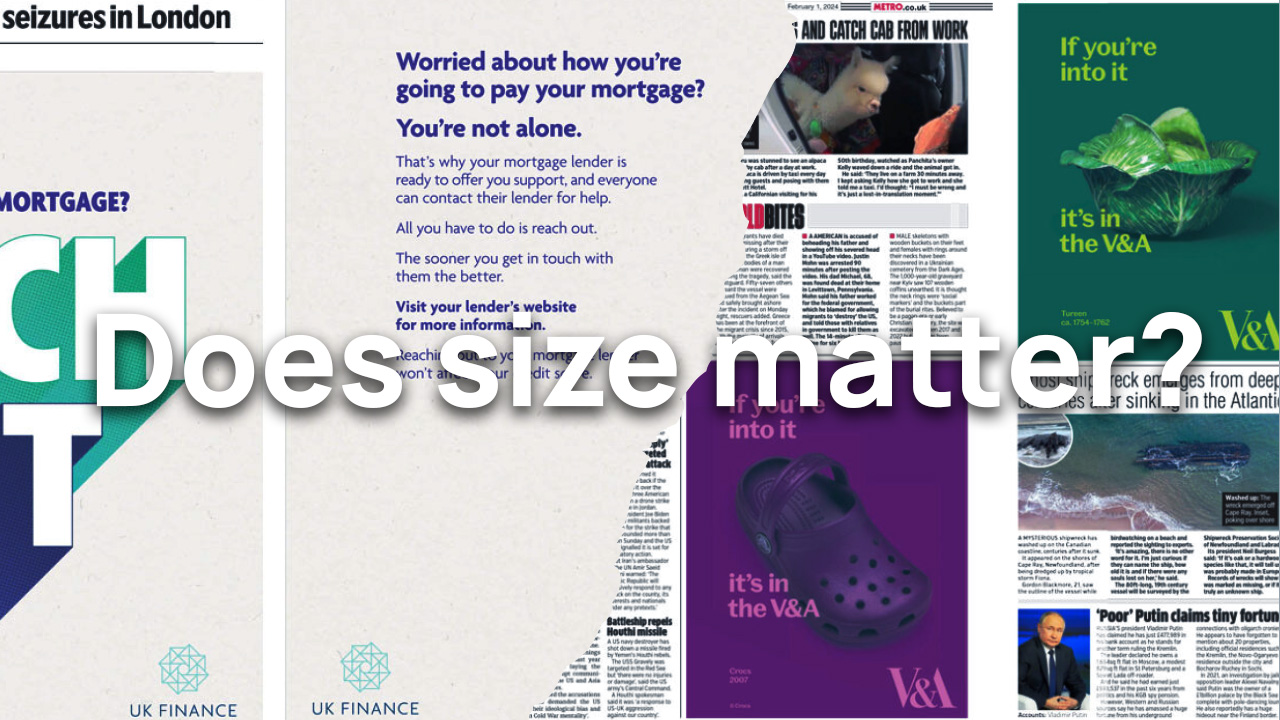
Insight from RAMetrics
We all know attention is vital for an ad to make an impact. However, how much can an attention-holding space such as news brands offer advertisers from its most engaged readers? Find out more from the Newsworks insight team’s latest research from the RAMetrics database
For an ad to be successful, it needs cut through — not just being noticed, but being seen, processed and engaged with. In other words, it needs readers to pay attention to it. If we connect, we might just buy. Attention = sales.
Advertisers will also be more than aware that attention is a finite resource that must be competed for. However, when it comes to news brands, we know that readers are switched on when they consume journalism.
This attentive mindset rubs off on ad performance (British Gas, Lumen). Compared with non-news sites, online news brand ads are 30% more likely to be seen. There’s even an added benefit for ads appearing alongside hard news: dwell time is 1.4x higher than next to soft news.
What’s more, our ‘Context matters’ research shows we experience higher engagement, higher emotional intensity and greater long-term memory encoding when we’re looking at ads on news brand websites compared with the open sprawl of the internet.
Meanwhile, printed news attracts a unique type of attentiveness. TouchPoints data shows 63% of print readers are not engaged in any other activity while they are reading a printed paper. They’re also likely to be feeling focussed or relaxed.
RAMetrics and ‘high attention’ ads
So, we know attention is a keystone of ad effectiveness, with the lean-in nature of news brands magnifying the attention they garner when it comes to the ads around them. How can we demonstrate the power of captivating ads and the effect it has on other key brand metrics?
One way of seeing this is in RAM UK’s ‘high attention’ readers, made up of people who both remembered seeing an ad campaign and scored seven out of 10 or more on a thoroughness recall metric. In 2023, 45% of news brand print ads were classified as high attention, rising to 59% for those online.
We can then apply this metric to the RAMetrics database, measuring effectiveness among ‘high attention’ readers across four key metrics:
- Recall: Measures whether a reader remembered a campaign and how thoroughly they paid attention to it.
- Recognition: Measures a reader’s familiarity with a brand.
- Engagement: Measures an ad’s creativity, benefit, emotional response and its ability to portray new information clearly.
- Action: Measures whether a reader visited the website or advertiser, bought, recommended or discussed the brand with others.
The attention seekers’ advantage
Once you filter for ‘high attention’ readers in the database, their clear impact across multiple metrics become clear: the group has higher levels of brand recognition, engagement and action than their benchmark counterparts.
What’s more, trended data shows that that group has grown over the past 10 years, on- and offline, with a 73% uplift for print and 78% growth for digital. Indeed, since 2021, digital high attention has shown a strong uplift of 23%, coinciding with greater consumer spending online post-pandemic.
So, how effective are these attention-seeking ads among those most likely to switch onto them? For a start, they are immensely engaging: while engagement with print ads as a whole has increased from 37% in 2013 to 51% in 2023, engagement among the ‘high attention’ group reaches a massive 82% in 2023.
When it’s time for action, stats from the ‘high attention’ readers are also impressive. Digital news brand ads are impressive at benchmark level for their prompt to action, with an average of 43% across the whole database of those who recall a digital news brand ad acting on it. However, for ‘high attention’ readers, this increases to a whopping 59%. It’s a similar story with print: the ‘high attention’ group is twice as likely to act on a printed news brand compared to the average reader – 49% versus 25%.
Pay attention
To summarise simply: advertisers need attention, news brands offer it. There is a growing group of consumers paying very close attention to news brands, and ads seen by this group are demonstrably more effective.
For more detailed insights into the impact of high attention ads, click below to access the full deck.
More RAMetrics analysis
In an increasingly digital world, the fate of print advertising is often called into question. Does the rise of the internet mean the death of newspaper ads?
Does size matter? Is bigger better? We’ve always known, always had a gut-feeling about the answer to this question – but now we have proof.
This analysis using the latest RAMetrics data will help you decide whether text or images (or both!) is right for your campaign



